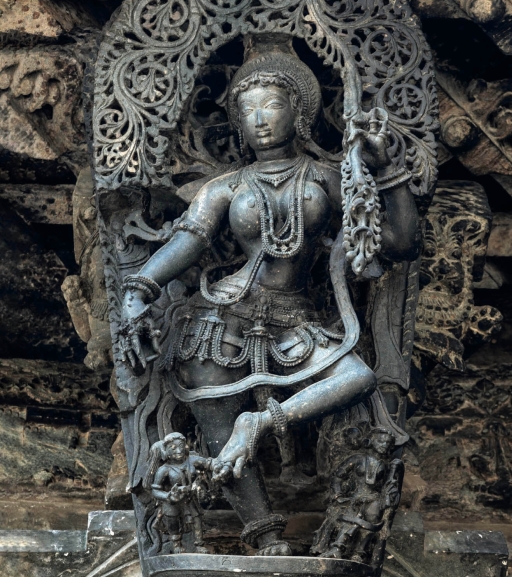Vijayanagara, City of Victory
John M. Fritz and George Michell
Vijayanagara, City of Victory, was the capital of the vast Hindu empire in southern India that flourished from the middle of the fourteenth century until 1565, when it was sacked and destroyed by invading armies. The city never recovered from this onslaught, and its ruins have been decaying for more than four hundred years. While Vijayanagara’s importance in Indian history is considerable, comparatively few historians and archaeologists are personally acquainted with the site. Those who do make the journey to Vijayanagara’s ruins, however, whether scholars, pilgrims, or tourists, are amazed and delighted to discover how much survives of the city’s former glory.
Unlike the capitals of earlier Hindu kingdoms in India, which have generally vanished from view except for their religious monuments, Vijayanagara preserves a significant range of civic and residential buildings. These standing and ruined monuments are set within a remarkable landscape of granite hills that serves as a natural fortress. But Vijayanagara is also a constructed citadel complete with massive walls, gateways, and watchtowers. Within the city are palaces, courtly pavilions, ceremonial platforms, stables, and stores maintained by a sophisticated water system. There are innumerable temples and shrines dedicated to different Hindu cults and some to Jain saviors. Sculptures and paintings adorn these buildings, illustrating mythological and royal themes.
The grand scale of the capital attests to the resources available to the Vijayanagara kings. The diverse styles of military, civic, courtly, and religious buildings express the cosmopolitan character of urban life and the rich artistic traditions patronized by the city’s elite population. Yet not all of Vijayanagara’s material record is immediately visible. Foundations of buildings and fragments of portable artifacts such as pottery lie buried in the soil that has accumulated since the destruction of the capital. Together with these remains, the monuments of Vijayanagara provide a substantial picture of a Hindu royal capital. The forms and locations of broken pottery and metal and glass objects yield clues about the inhabitants of Vijayanagara and their occupations. The historical records of the period permit these buildings and artifacts to be interpreted within the context of an elaborate courtly life.
Excerpted from the preface to City of Victory – Vijayanagara, The Medieval Hindu Capital of Southern India with photographs by John Gollings and text by John M. Fritz and George Michell

